070117
The Iconic Coca-Cola Wheeling Pottery Syrup Urn
© Blaine Martin 201
The Iconic Coca-Cola Wheeling Pottery Syrup Urn
© Blaine Martin 201
A brief history of the Coca-Cola serving tray
A brief history of the Coca-Cola serving tray
A brief history of the Coca-Cola serving tray
A brief history of the Coca-Cola serving tray
A brief history of the Coca-Cola serving tray
© Blaine Martin 2014
© Blaine Martin 2014
© Blaine Martin 2014
Most of the early trays are marked with the manufacturer name along the inside of the rim of the tray.

Most of the early trays are marked with the manufacturer name along the inside of the rim of the tray.

Most of the early trays are marked with the manufacturer name along the inside of the rim of the tray.



The Story of Coca-Cola Chewing Gum
A brief history of chewing gum
Commercial chewing gum in the United States dates back to John Curtis in 1848 when he produced a commercial chewing gum from the resin of spruce trees. He called this early chewing gum State of Maine Pure Spruce Gum. This was not a new concept since spruce tree sap and other saps in their natural state were chewed for thousands of years by native peoples around the world.
In the late 1860s and an American inventor named Thomas Adams Sr. of New York acquired a large amount of chicle from Mexico. Chicle is a milky latex material with a subtle flavor and high sugar content that is harvested from the Sapodilla Tree.



In 1869, after lengthy experimentation searching for alternative commercial uses for the latex substance, Adams stumbled upon a new use. By boiling the chicle, adding a flavoring and then hand rolling it into small samples, he produced a gum that could be chewed. This new product was marketed as Adams New York Chewing Gum. In 1871 Adam’s patented a machine for making chewing gum and new flavors and brands of gum followed such as the licorice flavored gum named Black Jack.
In 1879, Dr. Edward Beeman from Ohio, who had been marketing powdered pepsin in bottles to relieve indigestion, struck upon the idea of adding pepsin to chicle to create a chewing gum that aided digestion. The result was Beeman’s Chewing Gum. Pepsin is a gastric enzyme found in the stomach that aids in digesting proteins such as those in meat, eggs, seeds or dairy products.

The decade of the 1880s saw a proliferation of new chewing gum manufacturers and new brands appear on the scene. In 1880, William White struck upon the idea to add sugar and corn syrup to chicle to make the flavor last longer. He created a peppermint flavored gum named Yucatan. At the same year John Colgan of Louisville produced Colgan’s Gum. It came in flavors such as Taffy Tolu, Peppermint, Pepsin, Licorice, Orange and Cinnamon. Following the popularity of Colgan’s Gum six years later in 1886, another Louisville company headed by Jonathan Primley produced Kis-Me Chewing Gum. Kis-Me was offered in flavors such as Wintergreen, Peppermint Tolu, Orange and Pepsin. In 1893 William Wrigley introduced the still popular Wrigley’s Spearmint and Wrigley’s Juicy Fruit Gum.
By the beginning of the 20th century, chewing gum was becoming very popular confection and nearly every general store, candy store or drug store offered a variety of chewing gums and flavors. It was into this enterprising mix of competing brands that Coca-Cola Chewing Gum first appeared in 1903.
1903-1905
Coca-Cola Gum Company
The Coca-Cola Gum Company was chartered in Atlanta, Georgia on March 17, 1903 by David Carson, William Clark and George Rogers, with an initial investment of $15,000. It is important to note that this company was separate from The Coca-Cola Company itself, with The Coca-Cola Company only lending the use of its now-famous trademark to the Coca-Cola Gum Company through a contract signed by Asa Candler.
In this March 23, 1903 contract, the Coca-Cola Gum Company acquired the sole right to use the copyrighted words Coca-Cola in connection with the manufacture and marketing of chewing gum. In return The Coca-Cola Gum Company agreed to produce a good quality chewing gum and market the gum in packaging that maintained the high standards of that The Coca-Cola Company.
c.1904 Coca-Cola Gum magazine advertisement


c.1903-1905 Coca-Cola Chewing Gum Jars

The Coca-Cola Company agreed to sell Coca-Cola product or ingredients to the Coca-Cola Chewing Gum Company if they chose to use Coca-Cola as an ingredient in the chewing gum. It is safe to assume that Coca-Cola became an actual ingredient in the gum, since an ad that appeared in 1904 states that Coca-Cola Gum “contains the delightful tonic properties of Coca-Cola”. It also stated that at The Coca-Cola Company had the right to match any offer that the gum company received when selling the business.

c.1903 Coca-Cola Gum Hilda Clark Die-cut

1904 Chewing Gum trade card
c.1904 Coca-Cola Gum 5 stick package


c.1903 Coca-Cola Chewing Gum Bookmark
1905-1911
The Franklin Manufacturing Company
On March 11, 1905, after being in operation for only two years, The Coca-Cola Gum Company transferred all of its assets to The Franklin Manufacturing Company of Richmond, Virginia. The Franklin Manufacturing Company renamed their gum Coca-Cola Pepsin Gum. The digestion aid pepsin then became the main ingredient of the new gum and any mention of “Coca-Cola’s delightful tonic properties” ceased.
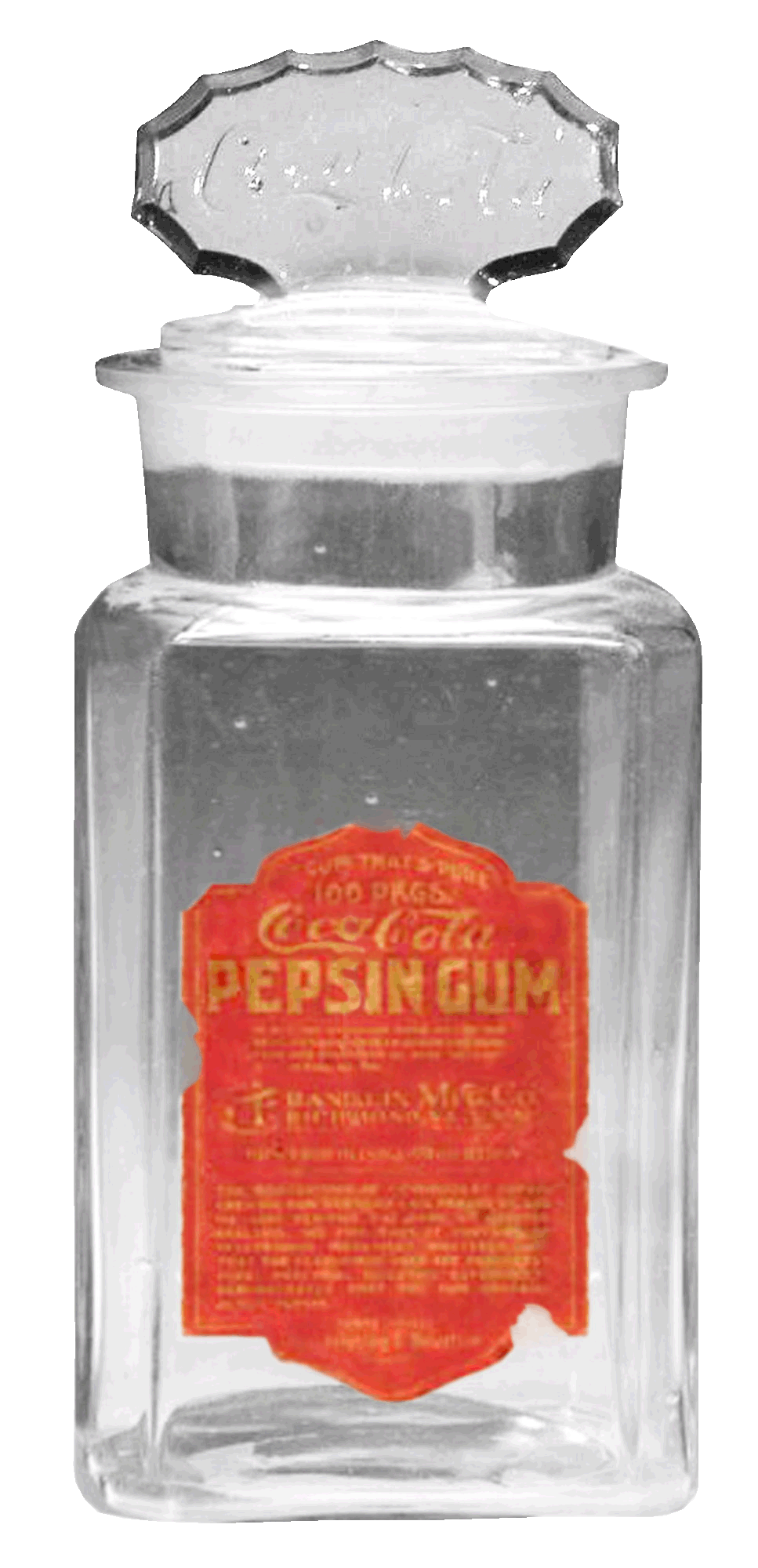
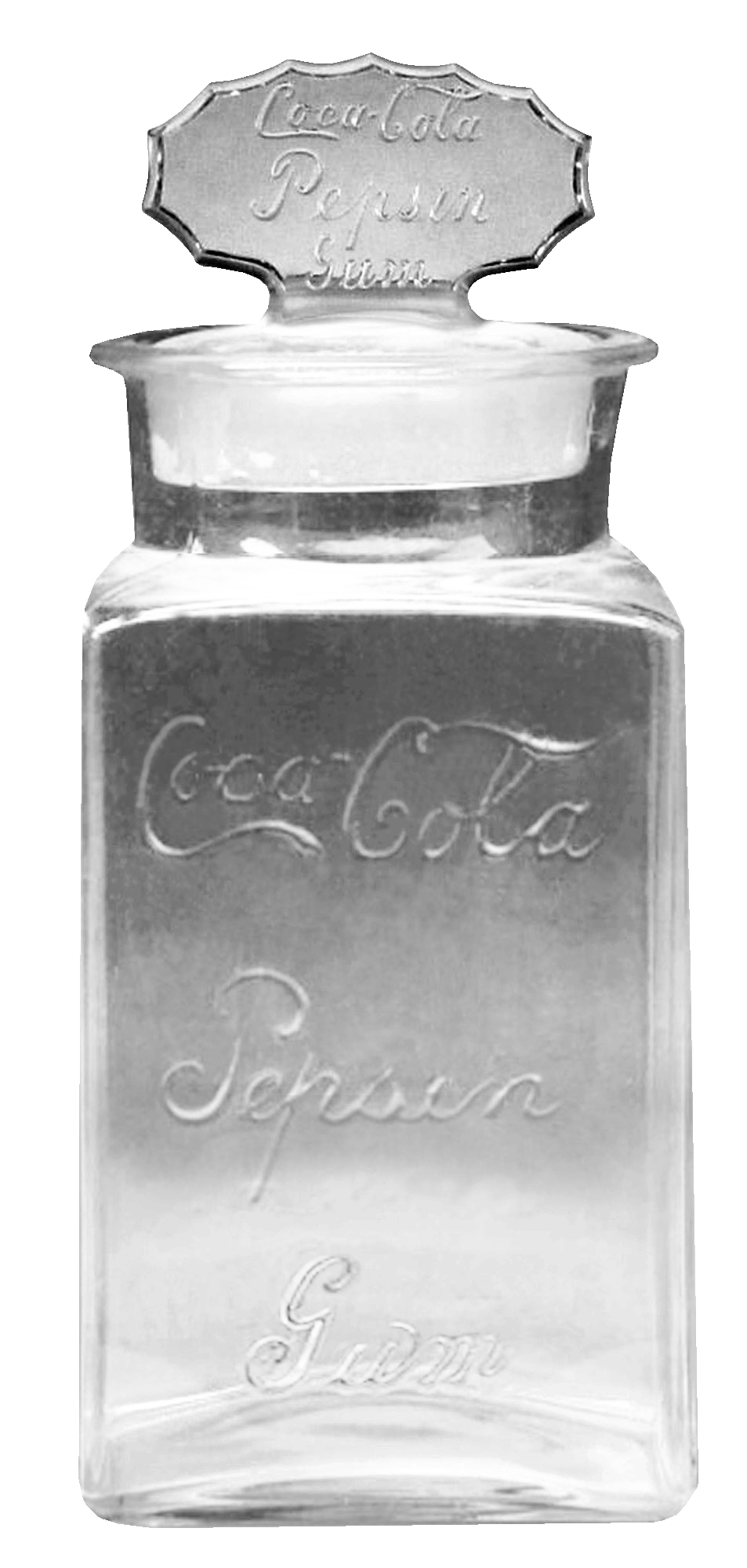
c.1905-1911 Coca-Cola Pepsin Chewing Gum Jars
�
1911-1921
Franklin-Caro Company
In 1911 the company name changed from The Franklin Manufacturing Company to the Franklin-Caro Company, Inc. The new Franklin-Caro Company soon added additional flavors to its line. In 1912 Coca-Cola Pepsin Gum was offered in Peppermint Pepsin, Spearmint Pepsin, and Wintergreen Pepsin. Caro Gum was added in 1914, Honey Fruit in 1915, and Richmint in 1916. By this time Coca-Cola Gum was distributed to stores nationwide through wholesale houses and even enjoyed some success being sold through Coca-Cola Bottlers. The Smithsonian Institution claims that by 1920 every American consumed an average of 105 sticks if gum annually. Business was booming and it apparently continued to prosper until the onset of World War I. At that time sugar, an important part of chewing gum, was rationed. The available sugar supply to the home front was cut in half creating a hardship for manufacturers.
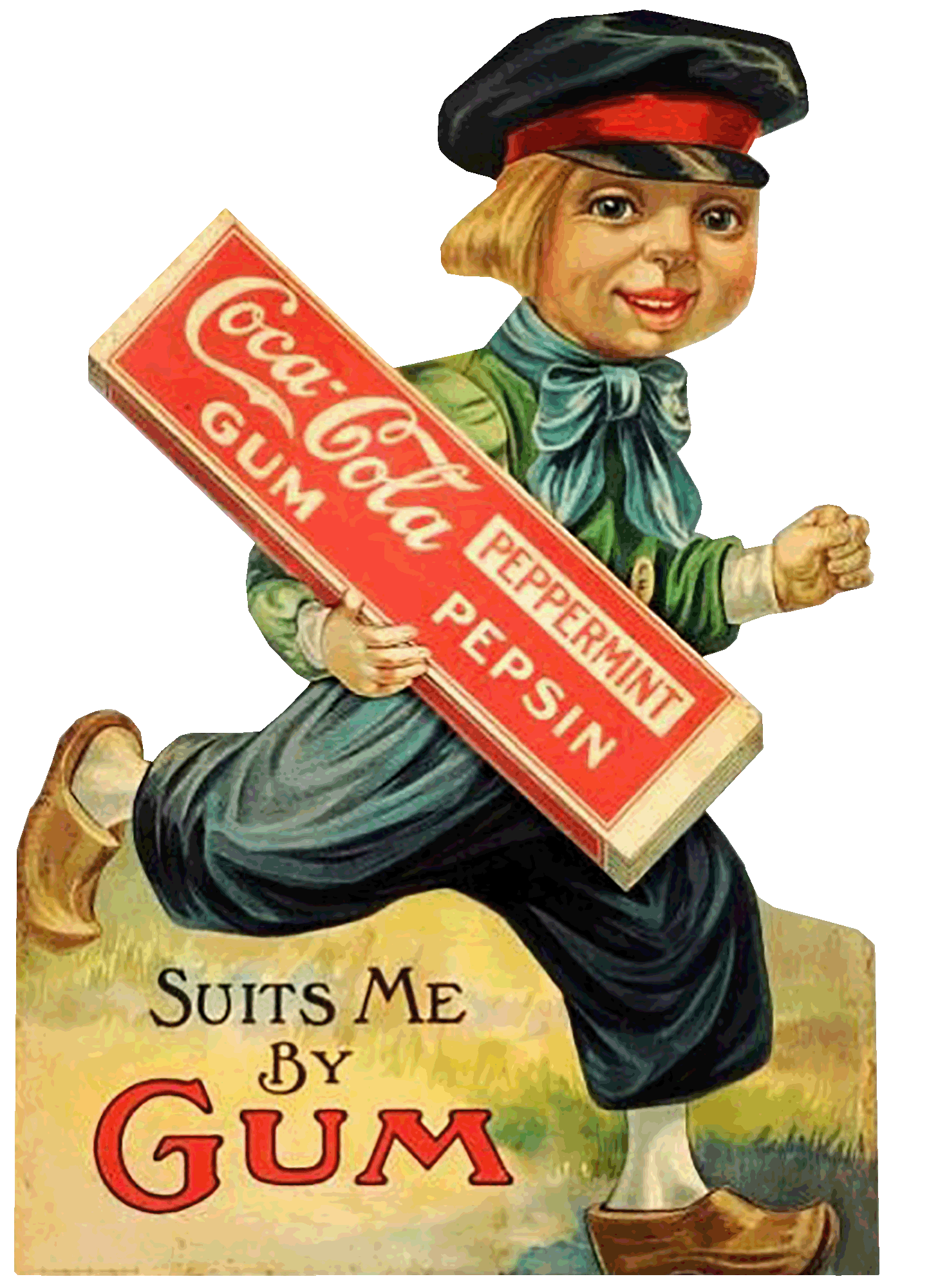
c.1914-1916 Coca-Cola Gum Cardboard Die-cut

c.1911-1913 Spearmint Pepsin Wrapper

c.1912 Coca-Cola Pepsin Gum Wrapper

c.1913-1916 Spearmint Pepsin Wrapper

c.1911-1913 Wintergreen Pepsin Wrapper

c.1913-1916 Spearmint Flavor Wrapper

c.1915-1920 Peppermint Pepsin Wrapper
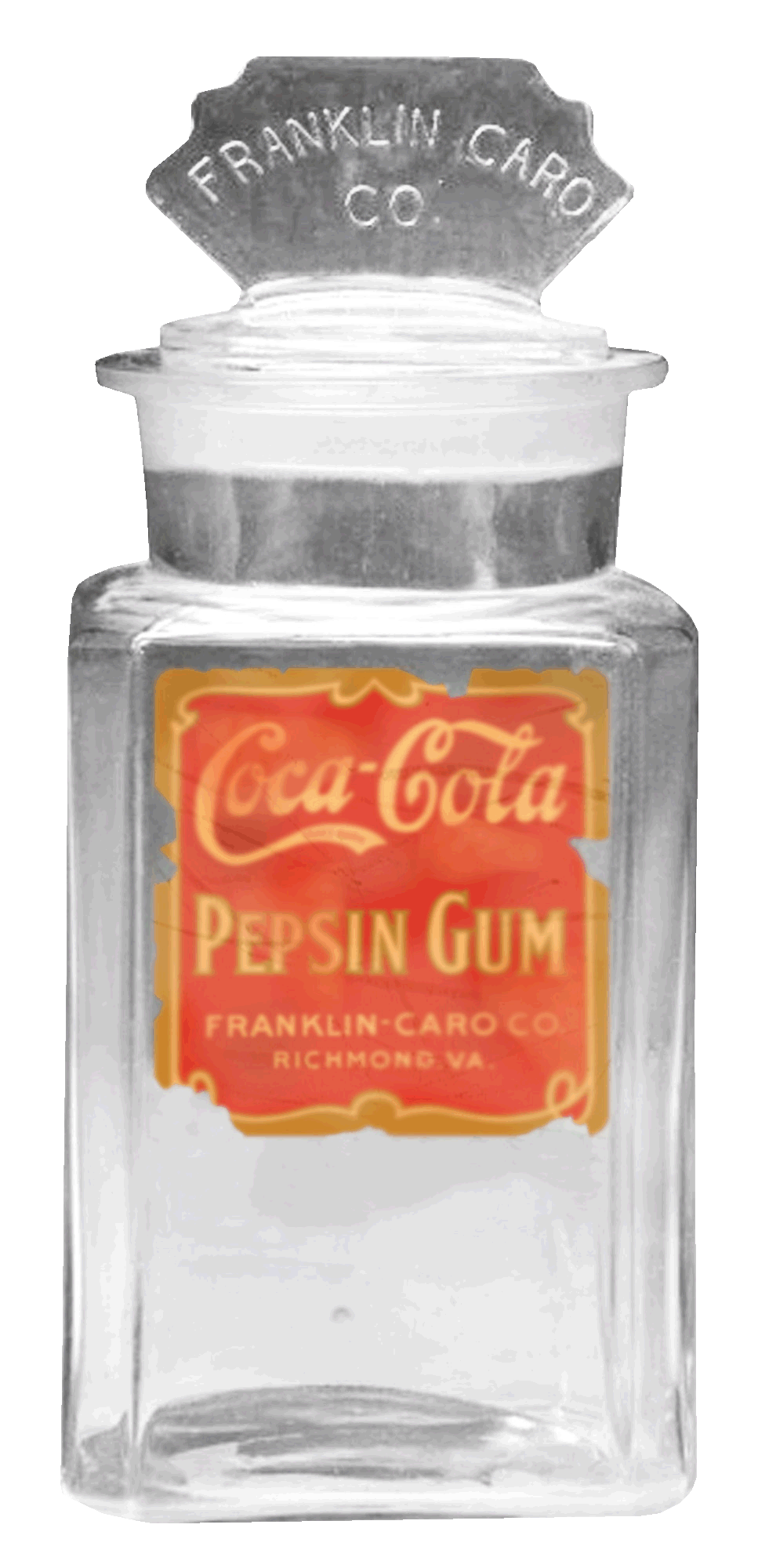
c.1912-1914 Coca-Cola Pepsin Gum Jar
After the war ended the increased demand and low supply caused sugar prices to soar to nearly five times the pre- war price. Soft drink companies, as well as gum and candy companies who used a lot of sugar had two hard choices — continue buy at the current market price and risk and uncertain future with the possibility of continued inflation, or stockpile sugar at the current available price. Many companies including Coca-Cola and Franklin-Caro chose to warehouse stockpiles of sugar for future use.
As luck would have it, by 1920 the price had fallen to below pre-war levels and many companies were left sitting on stockpiles of very expensive sugar. Because of its size and management Coca-Cola was able to survive the debacle, while smaller companies such as Pepsi-Cola (Cokes main rival) and Franklin-Caro were forced to declare bankruptcy. The Franklin-Caro Company went onto receivership on February 28, 1921 and on May 25 a bankruptcy sale was held. A businessman named Stanley Kratz purchased the bankrupt company for $40,000 and changed the name to the Franklin-Caro Gum Company, Inc.


c.1915 Coca-Cola Gum Blotter
c.1916 Coca-Cola Gum Blotter
1921-1924
Franklin-Caro Gum Company, Inc.
Having been relieved of the burden to pay back the sugar debt by bankruptcy, the new Franklin-Caro Gum Company seemed to be on good footing, even going as far as calling themselves the “Largest chewing gum manufacturer in the south” in their letterhead. They continued marketing the same products, with the addition of a new chewing gum named Velvet in 1923.
Later that same year, they also entered into the roasted peanut segment of the market with a brand named Ole Virginia Smithfield or simply Smithfield. By 1924 the Franklin-Caro Gum Company was weathering declining sales and subsequently sold their assets to Julius Wyman of Baltimore, Maryland for $20,000 - only one-half the $40,000 price that the company had sold for three years earlier. Wyman, acting surreptitiously on behalf of the Coca-Cola Company purchased Franklin-Caro to keep anyone else from buying the gum company and using the Coca-Cola trademark.

c.1921-1924 Spearmint Flavor Wrapper
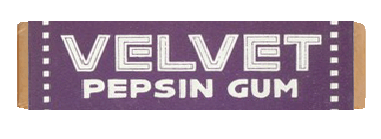
c.1923 Velvet Gum Wrapper
1925
Smithfield Products Company
On October 22, 1925, Mr. Wyman transferred all interests in Franklin-Caro to the Smithfield Products Company. Turner Jones, a vice president with The Coca-Cola Company, became president of Smithfield. The Coca-Cola trademark was again safely in the hands of The Coca-Cola Company. From 1925 on there is no evidence that Coca-Cola Gum was ever commercially sold again. A number of printed labels from 1941 and a proposed marketing study from the same time period provide some evidence that The Coca-Cola Company considered marketing gum again in 1941. But with the onset of World War II, the effort was apparently abandoned.
